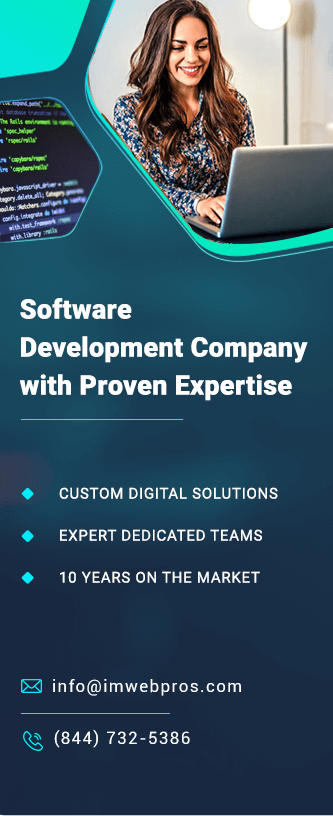07 January, 2025

imwpimwp
Front-end development continues to evolve as technologies and user expectations grow. As of 2025, the demand for responsive, dynamic, and efficient web applications has pushed developers to rely on powerful front-end frameworks. Frameworks like React, Vue.js, and Angular remain top choices, each offering unique features, strengths, and use cases. Choosing the right framework depends on your project’s specific needs, developer expertise, and long-term goals.
This comprehensive comparison will dive deep into these three leading front-end frameworks, focusing on their features, use cases, performance, and community support.
1. React
Overview
React, developed by Facebook (now Meta), has been a dominant player in front-end development since its launch in 2013. It’s a JavaScript library (not a full-fledged framework) designed for building user interfaces, particularly single-page applications (SPAs).
Key Features
•Component-Based Architecture: React promotes reusability with its modular component structure.
•Virtual DOM: Optimizes rendering by updating only the necessary parts of the real DOM.
•React Hooks: Simplifies state management and side effects without class components.
•Extensive Ecosystem: Works seamlessly with libraries like Redux, React Router, and more.
Pros
•Easy to learn for developers familiar with JavaScript.
•Exceptional performance due to the Virtual DOM.
•Backed by Meta and a large open-source community.
•Flexible integration with various libraries and frameworks.
Cons
•React itself is just a library, so developers need to rely on additional tools for routing, state management, and more.
•Steeper learning curve for beginners due to the need to manage many third-party tools.
•Frequent updates may require additional maintenance efforts.
Best Use Cases
•Dynamic SPAs with frequent UI updates (e.g., dashboards, social media platforms).
•Projects requiring high customization and scalability.
•Applications needing rich user interactions.
2. Vue.js
Overview
Vue.js, introduced in 2014 by Evan You, is a progressive JavaScript framework designed for simplicity and versatility. It strikes a balance between the heavy structure of Angular and the minimalism of React, making it a popular choice for developers.
Key Features
•Reactive Data Binding: Simplifies the connection between the UI and data.
•Directives: Built-in directives like v-for and v-bind make DOM manipulation easy.
•Vue CLI: Streamlines the setup and configuration of projects.
•Single-File Components (SFC): Combines HTML, CSS, and JavaScript in one file for modular development.
Pros
•Easy to integrate into existing projects due to its lightweight nature.
•Simple syntax, making it beginner-friendly.
•Offers two-way data binding for real-time updates.
•Flexible and less opinionated than Angular.
Cons
•Smaller community compared to React and Angular, leading to fewer third-party libraries and tools.
•Enterprise adoption is still growing, which may affect long-term support.
•Not as well-suited for large-scale, complex applications without additional configuration.
Best Use Cases
•Lightweight applications or prototypes.
•Progressive enhancements to existing projects.
•Applications where simplicity and speed of development are priorities.
3. Angular
Overview
Angular, developed by Google, is a robust and opinionated framework for building large-scale, feature-rich applications. It is a complete solution that includes tools for routing, state management, and dependency injection.
Key Features
•Two-Way Data Binding: Keeps the model and view in sync automatically.
•Dependency Injection: Manages service instances efficiently for scalable applications.
•TypeScript Support: Built on TypeScript, offering improved maintainability and tooling.
•Angular CLI: Simplifies project setup and management.
Pros
•Comprehensive framework with everything needed for a large application.
•Strong performance in handling complex and dynamic applications.
•Excellent for enterprise-level development due to its structure and scalability.
•Backed by Google, ensuring long-term support and updates.
Cons
•Steep learning curve due to its complexity and rigid structure.
•Heavier framework, which may lead to slower performance in small applications.
•Overhead in projects that don’t require all of Angular’s features.
Best Use Cases
•Large-scale, enterprise-level applications.
•Applications requiring a robust structure and scalability.
•Projects needing complex functionalities like real-time data updates and dependency management.
Performance Comparison
Rendering Speed
•React: The Virtual DOM provides excellent rendering performance, making it ideal for high-frequency UI updates.
•Vue.js: Offers fast rendering, particularly for smaller applications, thanks to its lightweight nature.
•Angular: Can handle large applications effectively, but its heavier framework may slightly reduce performance in smaller projects.
Initial Load Time
•React: Lightweight library ensures faster initial load times.
•Vue.js: Similarly lightweight, Vue also provides quick loading.
•Angular: Slightly slower initial load times due to its bundled size and dependency on modules.
Community and Ecosystem
React
•Vast community with extensive resources, tutorials, and libraries.
•Strong corporate backing from Meta ensures regular updates and innovation.
Vue.js
•Smaller but highly active community, with growing adoption among developers.
•Strong documentation and support for beginners.
Angular
•Large enterprise-level community and consistent updates from Google.
•Extensive official documentation and support forums.
Community and Ecosystem
React
•Vast community with extensive resources, tutorials, and libraries.
•Strong corporate backing from Meta ensures regular updates and innovation.
Vue.js
•Smaller but highly active community, with growing adoption among developers.
•Strong documentation and support for beginners.
Angular
•Large enterprise-level community and consistent updates from Google.
•Extensive official documentation and support forums.
Which Framework Should You Choose?
The right framework depends on your project’s goals and team expertise:
•React: Choose React for dynamic, scalable SPAs or projects requiring high customization.
•Vue.js: Opt for Vue if you’re building lightweight applications or enhancing existing projects.
•Angular: Angular is the best choice for enterprise-grade, large-scale applications with complex requirements.
Conclusion
As of 2025, React, Vue.js, and Angular remain the most popular front-end frameworks, each excelling in different areas. Understanding their strengths, weaknesses, and ideal use cases will help you make an informed decision. Whether you’re developing a small prototype or a large enterprise application, selecting the right framework can significantly impact your project’s success.
Invest time in evaluating your project’s specific needs and consider the expertise of your development team to choose the most suitable front-end framework for your goals.













